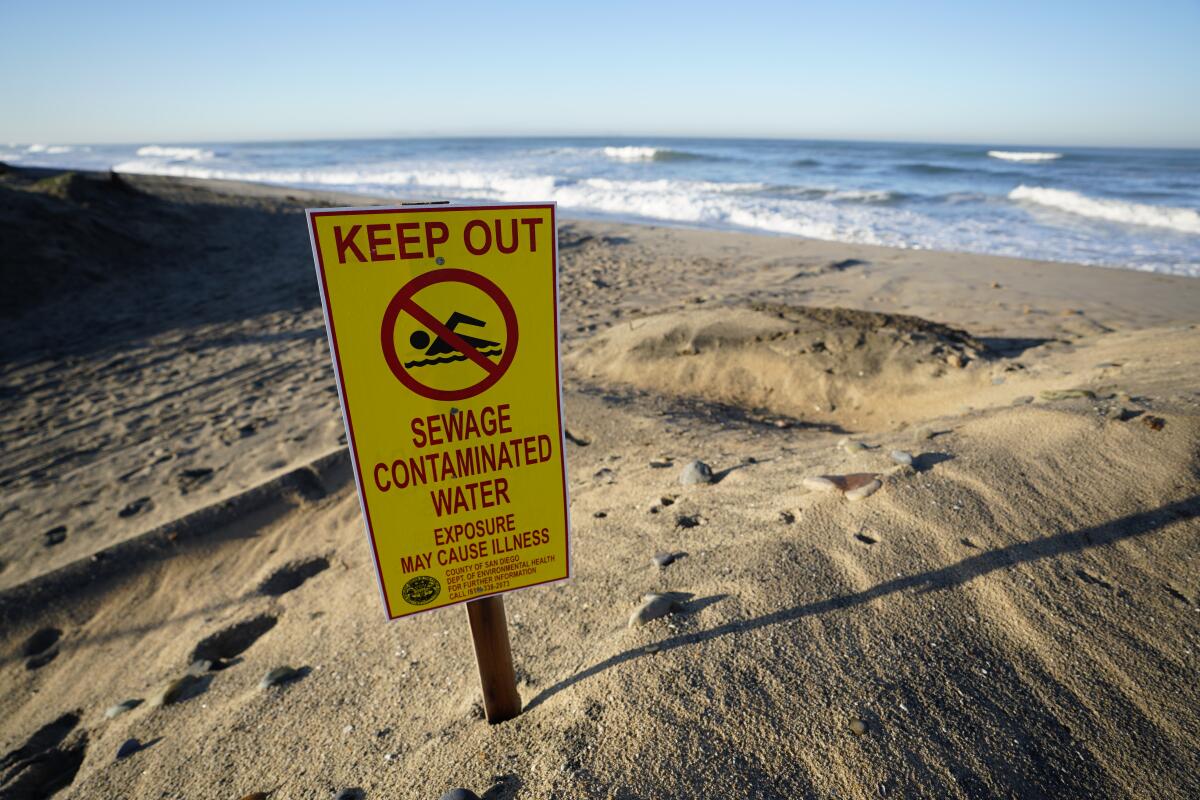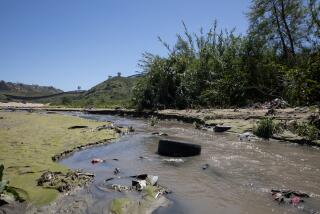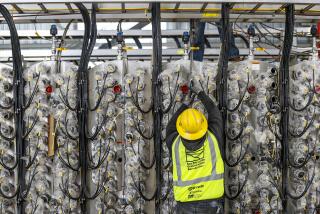San Diego’s efforts to plug Tijuana sewage suffer $150-million setback

SAN DIEGO — Hundreds of millions of federal dollars set aside to address the rampant sewage pollution from Tijuana that has plagued San Diego’s southern shoreline for decades will fall well short of what’s needed to get the job done, according to a new assessment.
Elected leaders in partnership with the U.S. Environmental Protection Agency had secured $300 million to double the capacity of a federal wastewater plant in San Diego that treats sewage from Tijuana. The project is part of a binational effort to stem cross-border pollution that has since last year shuttered shorelines as far north as Coronado at a record pace.
However, before the South Bay International Wastewater Treatment Plant can be upgraded, it will likely need as much as $150 million just to pay for deferred maintenance, according to a government memo recently obtained by the Union-Tribune.
“It’s a nightmare scenario,” said Imperial Beach Mayor Paloma Aguirre. “We secured the funding only to find out that at least half will have to go to rehabilitation of the plant.”
Mayors from across the San Diego region have recently joined Aguirre in calling on the Biden administration to declare a state of emergency over the pollution and fast-track more spending. Revelations about the extent of repairs needed at the plant have now cemented the need for that additional cash.
“Everybody’s urging the state and federal administration to really prioritize this,” she said. “People are getting sick. We’re going to have a summer with tourism impacted. That’s exactly why I’ve been calling for a state of emergency.”
The U.S. section of the International Boundary and Water Commission, or IBWC, which operates the facility, confirmed the accuracy of its document but declined multiple requests to comment for this story.
Agency officials have until now downplayed the situation, recently telling the Union-Tribune that such maintenance would cost just a “few million dollars.”
“We’re starting to catch up on the maintenance and the repairs,” Morgan Rogers, operations manager for the IBWC in San Diego, told the Union-Tribune in late May.
Aguirre of Imperial Beach said she was blindsided by the recent revelations, especially since she had been asking federal officials about the state of the plant for months.
“They side-stepped the question,” she said. “I didn’t get a straight answer.”
Tijuana’s crumbling wastewater system has suffered several pipeline breaks and other challenges over the last two years, a situation compounded by last winter’s heavy rains. Federal officials said that more than 33 billion gallons of sewage and chemical tainted water have flowed through the Tijuana River into San Diego so far this year.
The international wastewater plant in San Diego has provided a backstop for Mexico by routinely taking more wastewater than it was designed to handle.
But that’s taken a toll on the aging facility, which first came online in 1997. The plant’s five primary treatment tanks have been frequently clogged with sewage, garbage and sediment — discharging tens of million gallons a day of partially treated wastewater into the Pacific Ocean.
As a result, IBWC’s damaged facility has racked up numerous clean water violations, according to San Diego Regional Water Quality Control Board.
“You can only run a car so hard for so long without going to a service shop before it fails on you,” said Dave Gibson, executive officer for the regional water board, “and that’s where they’re at right now.”
Many of the plant’s key components “should have been replaced many years ago,” he added. “When you buy cheap, you pay twice.”
Mexico, for its part, has agreed to spend about $144 million to address the cross-border pollution, in part to replace its own crumbling wastewater plant, known as San Antonio de Los Buenos. The facility, located about 6 miles south of the border, spews an estimated 35 million gallons of raw sewage a day into the Pacific Ocean, which routinely floats up the coast polluting San Diego shorelines.
Both federal governments will now need to pony up significantly more cash to complete all the upgrades by the target date of 2027.
Reports of Tijuana sewage leaking over the border into the San Diego region stretch back at least to the 1930s. While significant improvements were made in the 1990s, the city’s plumbing hasn’t kept pace with population growth.
More to Read
Sign up for Essential California
The most important California stories and recommendations in your inbox every morning.
You may occasionally receive promotional content from the Los Angeles Times.











